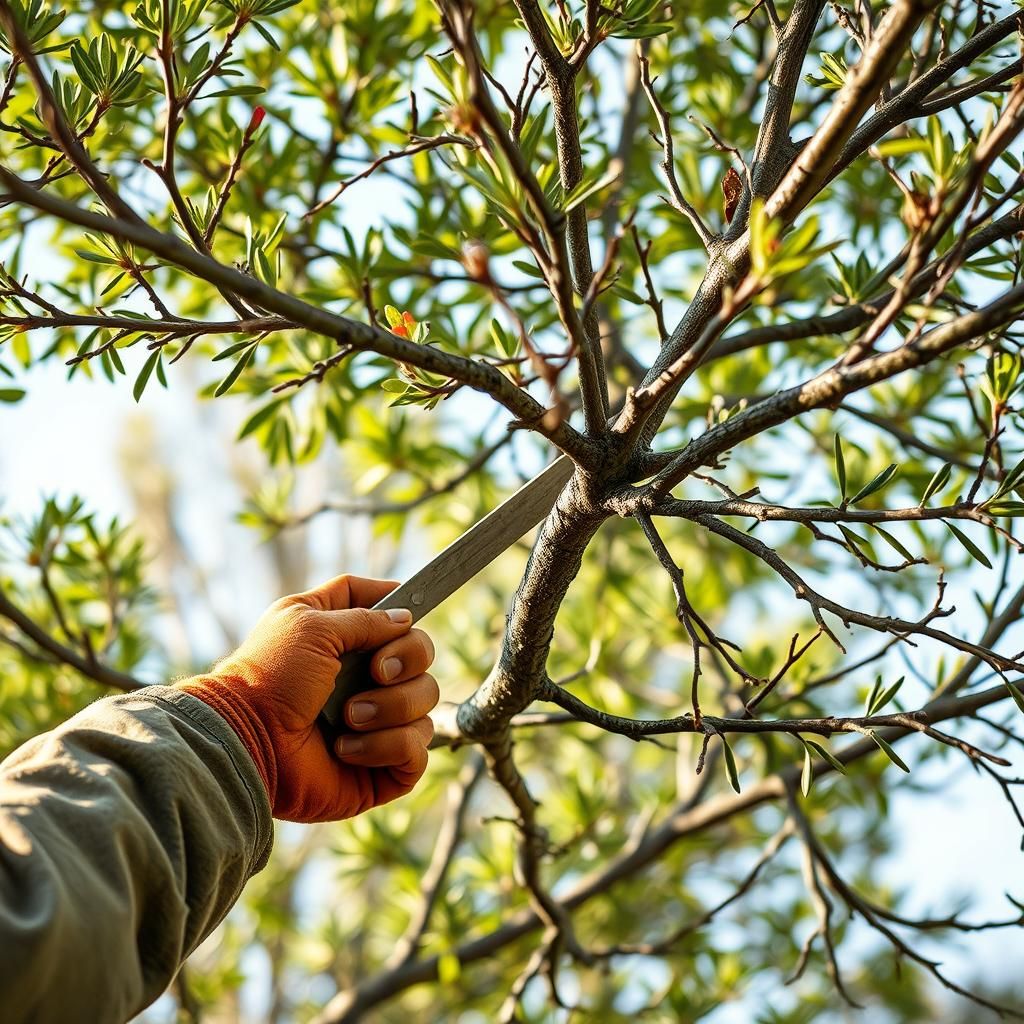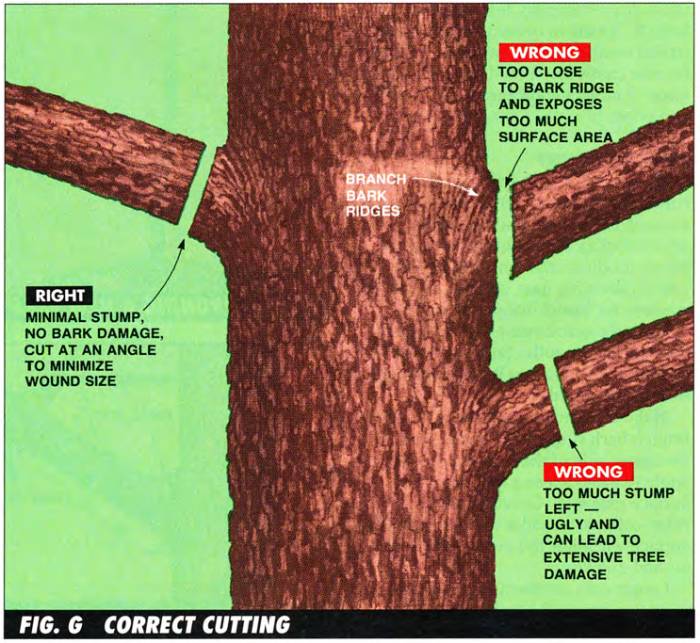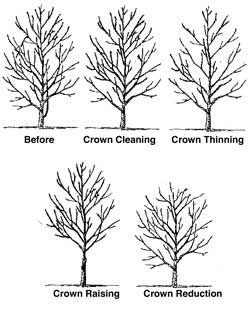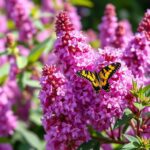What is it called when you trim the bottom branches of a tree? Understanding Tree Pruning Techniques

Tree pruning is an essential practice in horticulture that involves selectively trimming specific branches to improve the overall health and appearance of a tree. One common technique is the removal of lower branches, often referred to as crown lifting or limbing up. This process not only enhances the aesthetic appeal but also increases light penetration and air circulation within the tree’s canopy. Understanding the different pruning techniques, including the reasons and methods for trimming the lower branches, is crucial for tree care enthusiasts and professionals alike. This article will explore the importance of these practices and provide insights into effective tree pruning strategies.
- What is the process of trimming the bottom branches of a tree called?
- What is it called when you remove the bottom branches of a tree?
- Should you trim the bottom branches of a tree?
- What are the three types of pruning?
- Why do people cut the bottom branches off of pine trees?
- Questions from Our Readers
What is the process of trimming the bottom branches of a tree called?
The process of trimming the bottom branches of a tree is commonly known as crown raising. This technique involves selectively pruning the lower branches to increase the height of the tree's crown and improve aesthetics, air circulation, and light penetration into the landscape below. Crown raising not only helps in maintaining the healthy growth of the tree but also enhances visibility and access to areas directly below, making it a crucial practice in both urban and rural settings.
Benefits of Crown Raising
Crown raising provides several benefits beyond mere aesthetics. By removing lower branches, it allows more light to reach the ground, encouraging the growth of grass and other plants beneath the tree. Additionally, improving air circulation can reduce the likelihood of diseases that may thrive in shaded environments. The practice can also enhance the overall health of the tree, as it directs more nutrients towards the upper branches, fostering robust growth.
When to Perform Crown Raising
The best time to perform crown raising is during the dormant season, typically late winter or early spring, before new growth begins. This timing minimizes stress on the tree and limits the risk of disease entering through open wounds. However, minor crown raising can also be conducted at any time during the year, particularly if a branch poses an obstruction or safety hazard. Identifying the right timing is key to ensuring the tree's health remains uncompromised.
Tools Needed for Crown Raising
Crown raising requires specific tools to ensure the process is done efficiently and safely. Essential tools include pruning shears for small branches, loppers for mid-sized branches, and a saw for larger ones. In some cases, a ladder might be necessary to reach higher branches safely. It is crucial to maintain tool sharpness and cleanliness to promote healthy cuts and minimize the risk of infection.
Techniques for Effective Crown Raising
To achieve the best results in crown raising, specific techniques should be employed. Begin by assessing which branches are obstructive or unhealthy. Use the three-cut method for larger branches to prevent bark tearing: make an initial notch cut on the underside, followed by a cut on the top side to allow the branch to fall cleanly. Finally, ensure to prune above the branch collar, the swollen area where the branch connects to the trunk, to promote proper healing.
Common Mistakes to Avoid
When undertaking crown raising, several common mistakes can lead to long-term issues with the tree's health. One major error is removing too many branches at once, which can cause shock to the tree. Another mistake is cutting branches that are too close to the trunk, leading to improper healing and potential decay. It is essential to avoid pruning during extreme weather conditions, as the tree may be more susceptible to stress factors.
| Term | Description |
|---|---|
| Crown Raising | Pruning lower branches to elevate the tree's crown. |
| Dormant Season | Ideal time for pruning, usually late winter to early spring. |
| Pruning Shears | Tool used for cutting small branches. |
| Three-Cut Method | Technique to avoid tearing the bark on larger branches. |
| Branch Collar | Swollen area where a branch connects to the trunk. |
What is it called when you remove the bottom branches of a tree?

The process of removing the bottom branches of a tree is commonly referred to as limbing or thinning. This practice is often implemented for various reasons, such as improving the tree's health, enhancing its appearance, or facilitating access beneath the tree. When the lower branches are removed, it allows for better air circulation and can help in preventing diseases that thrive in damp, shaded areas.
The Importance of Limbing
Limbing serves several crucial purposes in tree management. It benefits the tree and the surrounding environment by:
- Improving air circulation: Remove lower branches to allow more air to flow through.
- Enhancing sunlight exposure: Helps the upper branches receive more light, promoting healthy growth.
- Facilitating maintenance: Makes lawn care and landscaping around the tree easier.
How to Properly Limb a Tree
To limb a tree effectively, follow these best practices:
- Assess the tree: Determine which branches need to be removed based on health and accessibility.
- Use the right tools: Equip yourself with sharp pruning shears or a saw for clean cuts.
- Make clean cuts: Cut at a slight angle to promote healing and reduce the risk of disease.
Benefits of Thinning Trees
Thinning trees can have numerous ecological and aesthetic benefits:
See also:
- Reduced competition: Allows other plants and trees to thrive by reducing overcrowding.
- Increased longevity: Helps the tree live longer by decreasing the strain on its resources.
- Enhanced beauty: Improves the overall visual appeal of the landscape by shaping the tree.
Potential Risks of Improper Limbing
If not done correctly, limbing can pose several risks:
- Injury to the tree: Cutting too many branches or improperly can cause stress.
- Increased vulnerability: Incorrect cuts can expose the tree to pests and diseases.
- Safety hazards: Falling branches can pose risks to individuals and property.
When to Consider Limbing
There are specific scenarios when it is advisable to consider limbing a tree:
- Prior to storm season: Reducing weight on the branches can help prevent breakage during storms.
- During the growing season: Late spring is usually the best time for limbing to minimize stress.
- When branches obstruct views: Limbing can enhance sightlines for roads or structures.
Should you trim the bottom branches of a tree?

Trimming the bottom branches of a tree can be a beneficial practice, but it requires careful consideration of several factors. Removing these branches can enhance the overall health and structure of the tree, but it is important to weigh the pros and cons before proceeding.
Benefits of Trimming Bottom Branches
Trimming the bottom branches offers multiple advantages. These include improved air circulation, better light penetration, and overall aesthetics of the tree. Additionally, removing low-hanging branches may decrease the likelihood of animal interference and help maintain a clean landscape.
- Improved Air Circulation: By removing lower branches, air can flow more freely around the tree, reducing the risk of fungal infections.
- Better Light Penetration: Trimming allows sunlight to reach the lower parts of the tree as well as grass and other plants beneath, promoting healthier growth.
- Aesthetic Appeal: A well-trimmed tree can enhance the overall look of your landscape, making it more visually appealing.
When to Trim Bottom Branches
Timing is crucial when it comes to trimming lower branches. The best time to perform this task is during the tree's dormant season, typically in late fall or winter. This minimizes stress on the tree and allows for better healing.
- Late Fall: This timing helps reduce sap loss and stress on the tree.
- Winter: Trimming during winter can help the tree focus its energy on recovery as it prepares for spring growth.
- Avoiding During Growth Season: Trimming during this period can disturb the tree's growth cycle and increase susceptibility to disease.
Considerations Before Trimming
Before trimming, it’s important to assess the health and growth pattern of the tree. Factors such as species, age, and environmental conditions can impact whether trimming is advisable.
- Tree Species: Some trees are sensitive to pruning, particularly during specific times of the year, making it essential to research the particular species involved.
- Tree Age: Younger trees may require more branch structure for stability, while older trees may benefit from trimming for health.
- Environmental Impact: Consider how removing branches might affect local wildlife or the surrounding ecosystem.
How to Properly Trim Bottom Branches
Proper technique is essential to avoid damaging the tree. Always use clean, sharp tools, and follow the appropriate methods for cutting branches. This helps ensure a clean cut that can heal more quickly.
- Use Proper Tools: Use sharp pruning shears or saws to make clean cuts.
- Make the Right Cuts: Cut at the branch collar to encourage quick healing and reduce the risk of rot.
- Avoid Over-pruning: Remove only what's necessary to avoid stressing the tree too much.
Potential Risks of Trimming Bottom Branches
While there are benefits to trimming, there are also risks involved. Improper pruning can lead to stress, disease, and structural issues with the tree in the long term.
- Disease Susceptibility: Cutting branches exposes the tree to potential pathogens, increasing the risk of infection.
- Structural Weakness: Removing too many branches can compromise the tree's natural structure and stability.
- Stress on the Tree: Excessive pruning can lead to stress, making the tree more vulnerable to environmental challenges.
What are the three types of pruning?

The three types of pruning are thinning, topping, and restructuring. Each method serves a different purpose and is used in specific circumstances to promote the health and appearance of plants and trees.
Thinning Pruning
Thinning pruning involves the selective removal of specific branches throughout the tree or shrub. This technique is primarily aimed at improving air circulation, light penetration, and encouraging better overall growth. Thinning does not significantly reduce the size of the plant, but it can enhance its structural integrity and aesthetics.
See also:
- Improves air circulation: Reduces the risk of fungal diseases by allowing air to flow freely.
- Enhances light penetration: Ensures that inner leaves receive adequate sunlight, promoting healthy growth.
- Maintains natural shape: Preserves the plant’s natural form while removing unnecessary weight from the branches.
Topping Pruning
Topping is a more aggressive pruning technique that involves cutting back branches to a predetermined height, which can lead to a more compact appearance. This method, often used in urban environments, redefines the shape of the plant but can sometimes lead to unintended stress and health issues if not done correctly.
- Reduces height: Effective for controlling the growth of tall trees and shrubs.
- Enhances visibility: Creates space for structures or gardens when plants obstruct views.
- Promotes bushier growth: Can lead to multiple shoots emerging from cut areas, resulting in denser foliage.
Restructuring Pruning
Restructuring pruning is done to change the framework and structure of a plant, particularly if it has become unbalanced or overcrowded. This type of pruning is essential for trees that have grown unevenly due to competition for light or have sustained damage from storms.
- Encourages balanced growth: Helps in reshaping the plant to ensure an even distribution of resources.
- Promotes health: Removes weak or damaged limbs to improve the overall vigor of the plant.
- Increases longevity: Properly shaped trees are less likely to experience breakage or other structural issues in the long term.
Why do people cut the bottom branches off of pine trees?
People cut the bottom branches off of pine trees for various reasons, mainly to improve tree health, aesthetics, safety, and land management. By removing lower branches, people can enhance air circulation and sunlight penetration, promoting better growth. Additionally, this practice can minimize pest infestations and diseases that thrive in humid, dark environments created by dense foliage.
Enhancing Aesthetic Appeal
Cutting the bottom branches off pine trees can significantly improve their aesthetic appeal. Many tree owners prefer the streamlined look of a tree with a clear trunk. This not only makes the tree more visually pleasing but also provides a more open view of the surrounding area.
- Creates a more open landscape.
- Highlights the unique shape of the tree.
- Aids in maintaining uniformity in gardens or parks.
Improving Air Circulation
Another important reason for pruning bottom branches is to enhance air circulation. Lower branches can obstruct airflow around the tree, making the lower trunk and soil beneath more susceptible to moisture retention.
- Prevents fungal infections.
- Reduces the risk of saprophytic organisms.
- Encourages healthier growth of lower-level foliage.
Promoting Healthier Growth
Cutting off bottom branches can contribute to the tree's overall health by redirecting nutrients and energy. With fewer branches at the bottom, the tree can focus more energy on developing its upper foliage, leading to a more vigorous and robust tree.
- Encourages vertical growth.
- Enhances the tree's ability to photosynthesize.
- Reduces competition for sunlight among lower branches.
Reducing Safety Hazards
Removing the lower branches can also minimize potential safety hazards. As the lowest branches can interfere with pedestrian pathways, vehicular traffic, or gardening activities, their removal can create a safer environment for people around.
- Prevents branch breakage from contact with people.
- Reduces the risk of accidents during maintenance work.
- Facilitates better visibility for drivers and pedestrians.
Facilitating Land Management
In the context of land management, cutting lower branches off pine trees can be a strategic move. This practice allows for easier maintenance and management of the landscape, especially in managed forests or wooded areas intended for logging or habitat conservation.
- Makes harvesting timber safer and more efficient.
- Improves access for equipment and personnel.
- Supports wildlife management by creating open spaces.
Questions from Our Readers
What is the term for trimming the bottom branches of a tree?
The process of trimming the bottom branches of a tree is commonly referred to as limbing or lifting. This practice helps improve the aesthetics of the tree and can also promote better air circulation and sunlight exposure for the remaining foliage.
Why is it important to trim the bottom branches of a tree?
Trimming the bottom branches can enhance the overall health of the tree by allowing better access to nutrients and preventing disease spread. It also helps reduce the risk of branches interfering with pedestrians or vehicles.
When is the best time to trim the bottom branches of a tree?
The ideal time to trim the bottom branches is during late winter or early spring when the tree is still dormant. This timing minimizes stress on the tree and allows for quicker recovery and growth as the growing season begins.
See also:
Can trimming the bottom branches harm the tree?

If you want to read more articles like What is it called when you trim the bottom branches of a tree? Understanding Tree Pruning Techniques, we recommend you check out our Pruning category.
Leave a Reply
Related Articles